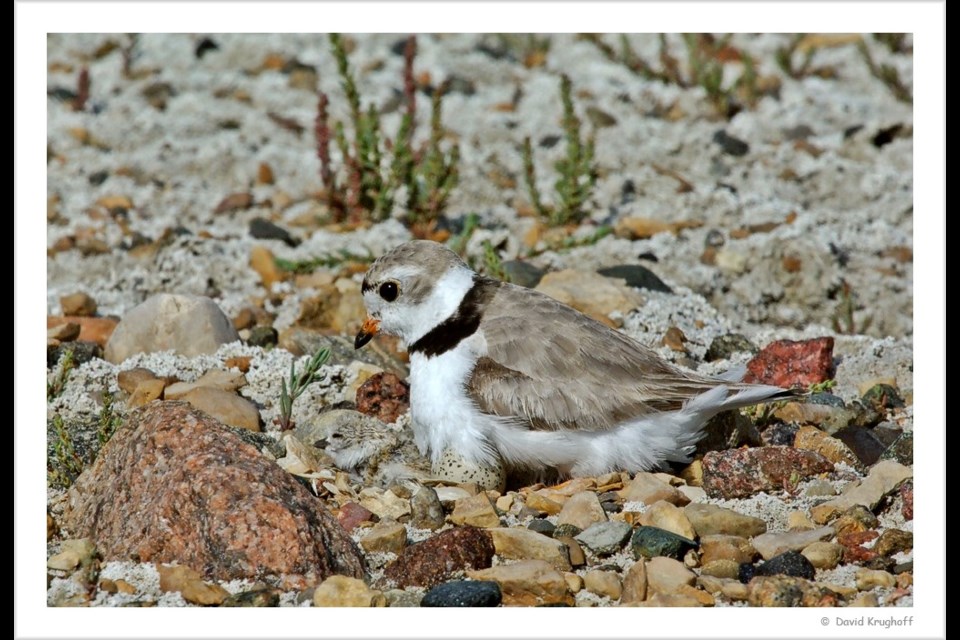At long last our provincial parks and lake side campsites have opened throughout the province, and many of us can’t wait to head to the beach! While you’re out there taking in the summer sun, please remember to keep an eye out for other families who are out for a stroll – Piping Plover chicks and their parents may be wandering the shoreline with you!
“As we return to our favourite beaches, it’s a great time to see Piping Plovers! This endangered species has some of its highest numbers of breeding pairs in Saskatchewan. Mid-June is a time to be watchful as late nesters may still be incubating eggs or have young chicks toddling along the water’s edge, making them vulnerable to trampling”, explains Shirley Bartz, Habitat Stewardship Coordinator with Nature Saskatchewan.
“Piping Plovers’ best defense is camouflage. Nests are just a shallow depression lined with small stones, eggs look like speckled rocks, and chicks blend in with the beach sand until we see them run. Although chicks can walk and run within hours of hatching, they are not able to fly for the first couple of weeks out of the nest,” adds Shirley. “So, to give Piping Plovers the best chance possible, we are asking beachgoers and anglers to keep watch around their feet and along shorelines, like those at Lake Diefenbaker.”
Piping Plovers are a small shorebird identified by their distinct markings – a black band on their forehead and a single black band around their neck. They also have a bright white belly, grey-brown backs, orange legs, and an orange beak with a black tip. Their look-a-like cousin is the Killdeer, which is larger, browner in colour, and has two black bands around their neck instead of one. “Like the Killdeer, Piping Plovers have a broken wing display around their nests: they pretend to be injured to draw potential predators (e.g., you!) away from their nest. But, it is all an act, and the bird will fly back to its chicks once it has lured you far enough away”, says Shirley.
Between now and early August, Piping Plovers will be eating as much as possible in an attempt to build up body fat to fuel their 3,500 km flight back to the Gulf of Mexico where they spend the winter. “Since Saskatchewan has the highest numbers of breeding Piping Plovers in Canada, we feel a great responsibility to give these endangered shorebirds the best chance possible for breeding success before their long journey south,” says Shirley.
Nature Saskatchewan works with landowners and the public to monitor and conserve suitable shorelines. If you see a Piping Plover please call our toll-free Hoot Line at: 1-800-667-HOOT (4668) or email [email protected]., 1-800-667-HOOT (4668). “As residents of Saskatchewan, we can all work together to help this amazing species survive and thrive.”
Personal and sighting information is never shared without permission.




